พระที่นั่งคูหาคฤหาสน์ ถ้ำพระยานคร
พระที่นั่งคูหาคฤหาสน์ ถ้ำพระยานคร
ที่อยู่ ถ้ำพระยานคร ตำบลเขาสามร้อยยอด อำเภอสามร้อยยอด จังหวัดประจวบคีรีขันธ์
ผู้ออกแบบ พลเรือโท พระวรวงศ์เธอ พระองค์เจ้าขจรจรัสวงษ์ กรมหมื่นปราบปรปักษ์ (หม่อมเจ้าขจร มาลากุล)
ปีที่สร้าง พ.ศ.2433
ปีที่ได้รับรางวัล พ.ศ.2556
ผู้ครอบครอง ตั้งอยู่ในเขตพื้นที่ของอุทยานแห่งชาติเขาสามร้อยยอด
ประวัติ
พระที่นั่งคูหาคฤหาสน์ ตั้งอยู่ภายในถ้ำพระยานคร บนไหล่เขาลูกหนึ่งของทิวเขาสามร้อยยอดในพื้นที่เขตอุทยานแห่งชาติเขาสามร้อยยอด อำเภอสามร้อยยอด จังหวัดประจวบคีรีขันธ์ ที่มาของชื่อ “ถ้ำพระยานคร” กล่าวกันว่าเนื่องจากพระยานครผู้ครองเมืองนครศรี ธรรมราชเป็นผู้ค้นพบ แต่ยังไม่ทราบแน่ชัดว่าเป็นพระยานครท่านใด ระหว่างพระยานครซึ่งมีชีวิตอยู่ในช่วงสมัยกรุงศรีอยุธยาในรัชสมัยสมเด็จพระ นารายณ์มหาราช (พ.ศ.2199–2231) พระยานครผู้นี้ได้สั่งประหารศรีปราชญ์ที่ถูกเนรเทศไปอยู่เมืองนครศรีธรรมราช โดยมิได้รับพระบรมราชานุญาต ในระหว่างเดินทางไปเข้าเฝ้าได้แวะพักหลบคลื่นลมและหนีพระราชอาญาไปอยู่ที่ ถ้ำแห่งนี้แต่สุดท้ายก็ถูกจับประหารชีวิต ส่วนพระยานครอีกท่านหนึ่งมีชีวิตอยู่ในสมัยรัชกาลที่ 1 แห่งกรุงรัตนโกสินทร์ไทยมีสงครามกับพม่า(ตรงกับสมัยพระเจ้าปดุง)พระยานครถูก พม่าหลอกว่าตีเมืองแตกจึงหลบหนีไป ต่อมาเมื่อสอบสวนได้ความจริงแล้ว โปรดเกล้าฯ ให้กลับไปครองเมืองนครศรีธรรมราชตามเดิม ระหว่างเดินทางเกิดคลื่นลมจัดจึงหลบขึ้นไปบนเขา ทำให้พบถ้ำแห่งนี้
พระบาทสมเด็จพระจอมเกล้าเจ้าอยู่หัว (รัชกาลที่ 4) เสด็จประพาสยังถ้ำพระยานครเมื่อปี พ.ศ. 2402 ในคราวเสด็จพระราชดำเนินมณฑลปักษ์ใต้ ซึ่งในคราวนี้ได้มีการสร้าง “ ศาลาบ่อน้ำ ” ขึ้น ที่บริเวณอ่าวชายทะเล ลักษณะเป็นศาลาเครื่องไม้มุงกระเบื้องดินเผา ขนาดความกว้าง 10 ศอก มีทั้งหมด 3 ห้อง พื้นศาลาทั้งหมดโบกปูน ห้องกลางของศาลามีบ่อน้ำจืด 1 บ่อ ลักษณะเป็นบ่อขุดทรงกลม ขนาดความกว้างประมาณ 4 ศอก ลึก 6 ศอก ก่ออิฐเป็นขอบโดยรอบตั้งแต่ท้องบ่อขึ้นมา และทางเดินเรียงด้วยก้อนศิลาระยะทางประมาณ 10 เส้นเป็นทางขึ้นเขา บ่อน้ำที่ชายทะเลนี้แต่เดิมเรียกกันว่า “ บ่อพระยานคร ”
ในรัชสมัยพระบาทสมเด็จพระจุลจอมเกล้าเจ้าอยู่หัว (รัชกาลที่ 5) ได้เสด็จถ้ำพระยานคร ในคราวเสด็จประพาสแหลมมลายูเมื่อปี พ.ศ.2433 แล้วโปรดเกล้าฯ ให้สร้างพลับพลาที่ประทับ โดยโปรดเกล้าฯให้พระองค์เจ้าขจรจรัสวงศ์ จัดทำขึ้นที่กรุงเทพฯ โดยแล้วส่งไปก่อสร้างในถ้ำ เมื่อวันที่ 20 มิถุนายน พ.ศ.2433 ได้เสด็จไปยกช่อฟ้าพลับพลาที่ประทับ และพระราชทานนามว่า “พระที่นั่งคูหาคฤหาสน์” ในการนี้ได้ลงพระปรมาภิไธยย่อ จ.ป.ร.ไว้ที่ผนังถ้ำด้านเหนือของพลับพลาด้วย กรมศิลปากรได้ประกาศขึ้นทะเบียนพระที่นั่งคูหา คฤหาสน์เป็นโบราณสถานของชาติในราชกิจจานุเบกษา เล่ม 69 ตอนที่ 60 เมื่อวันที่ 30 กันยายน 2495
ในสมัยพระบาทสมเด็จพระมงกุฎเกล้าเจ้าอยู่หัว (รัชกาล ที่ 6) กล่าวกันว่าเคยเสด็จที่ถ้ำพระยานครครั้งหนึ่งแต่ไม่ระบุว่าปีใด พระบาทสมเด็จพระปกเกล้าเจ้าอยู่หัว (รัชกาลที่ 7) ได้เสด็จพระราชดำเนินไปประทับที่พระที่นั่งคูหาคฤหาสน์เมื่อวันที่ 20 พฤศจิกายน พ.ศ.2469 และได้จารึกพระปรมาภิไธยย่อ ป.ป.ร. ไว้ที่ผนังถ้ำด้านตะวันตกของพลับพลา และพระบาทสมเด็จพระเจ้าอยู่หัวภูมิพลอดุลยเดช เสด็จพระราชดำเนินยังพระที่นั่งคูหาคฤหาสน์เป็นการส่วนพระองค์ ในวันที่ 22 มิถุนายน พ.ศ.2501
ลักษณะสถาปัตยกรรมเป็นอาคารพลับพลาทรงจตุมุข ขนาดความกว้าง 1.75 เมตร ความยาว 7.75 เมตร ความสูง 2.55 เดิมยกใต้ถุนสูงประมาณ 0.50 ม. เป็นอาคารโครงสร้างไม้ หลังคาซ้อนสองชั้นมุงด้วยแผ่นโลหะ หน้าจั่วประดับเครื่องลำยองประกอบด้วย ช่อฟ้า ใบระกา หางหงส์ ทำด้วยไม้สลักลายประดับกระจก ตามรูปแบบของงานสถาปัตยกรรมไทยประเพณี ที่หน้าบันมุขทุกด้านประดับกระจกเป็นลวดลายไทย ฝ้าเพดานภายในเขียนลายดาว
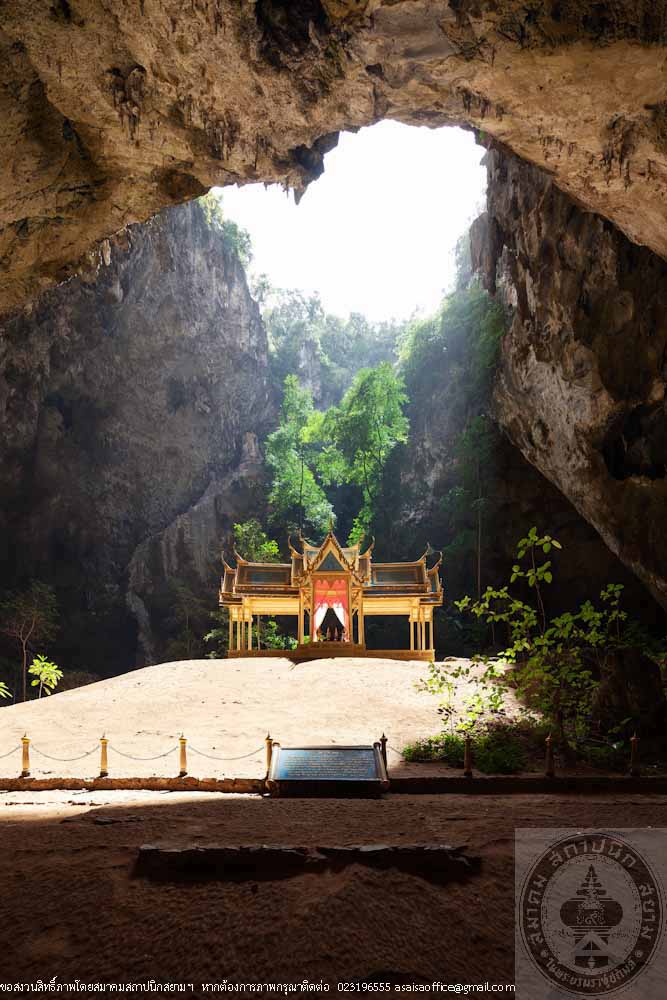
พระที่นั่งคูหาคฤหาสน์ ถ้ำพระยานคร
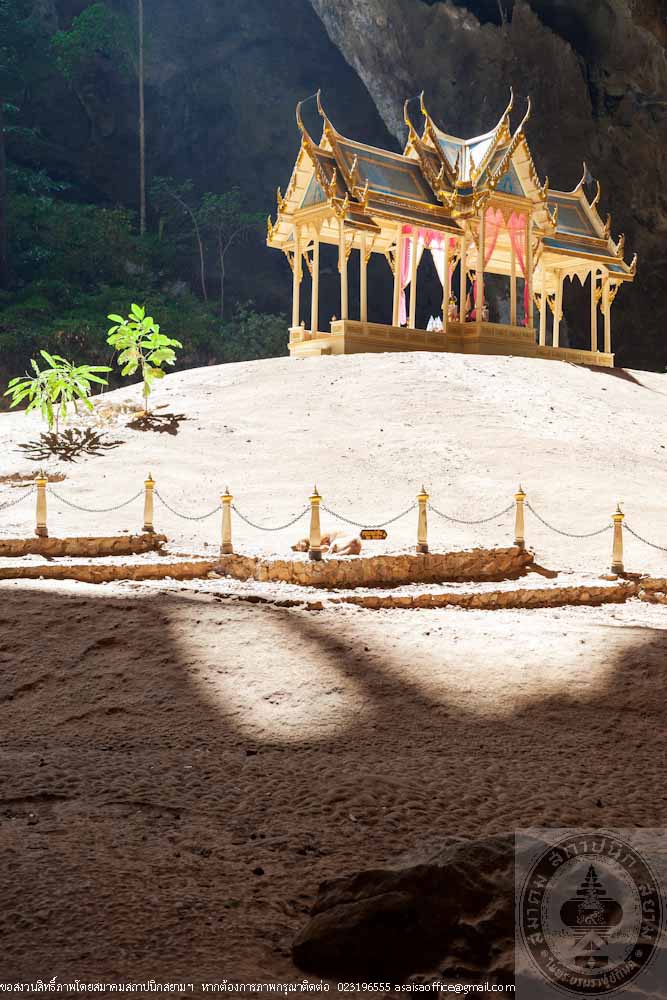
พระที่นั่งคูหาคฤหาสน์ ถ้ำพระยานคร
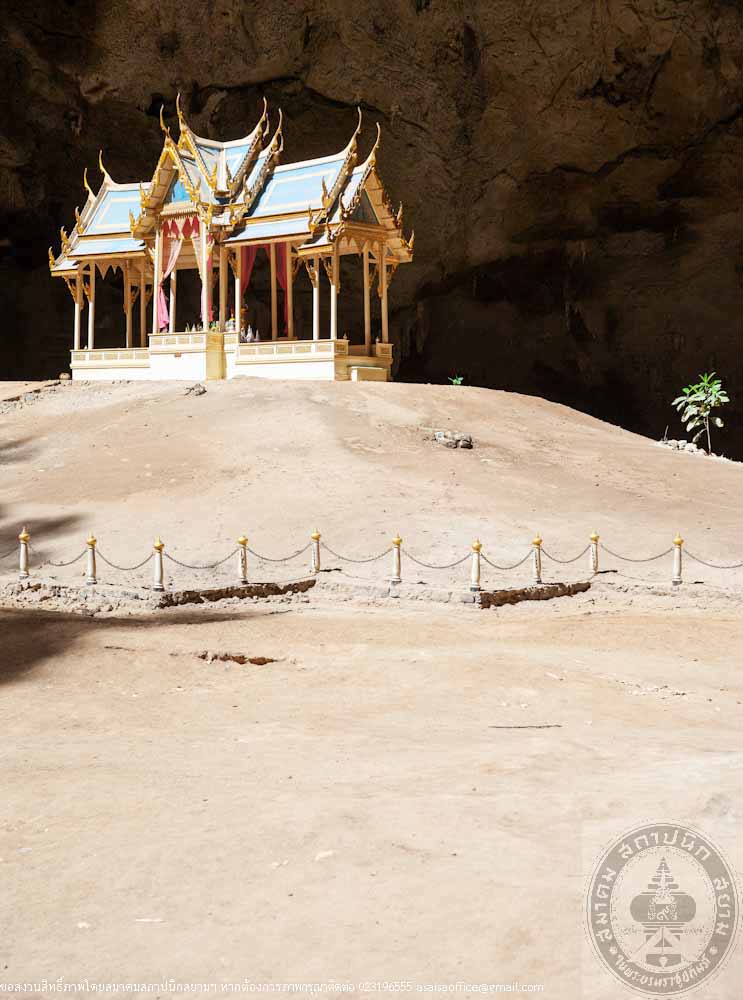
พระที่นั่งคูหาคฤหาสน์ ถ้ำพระยานคร
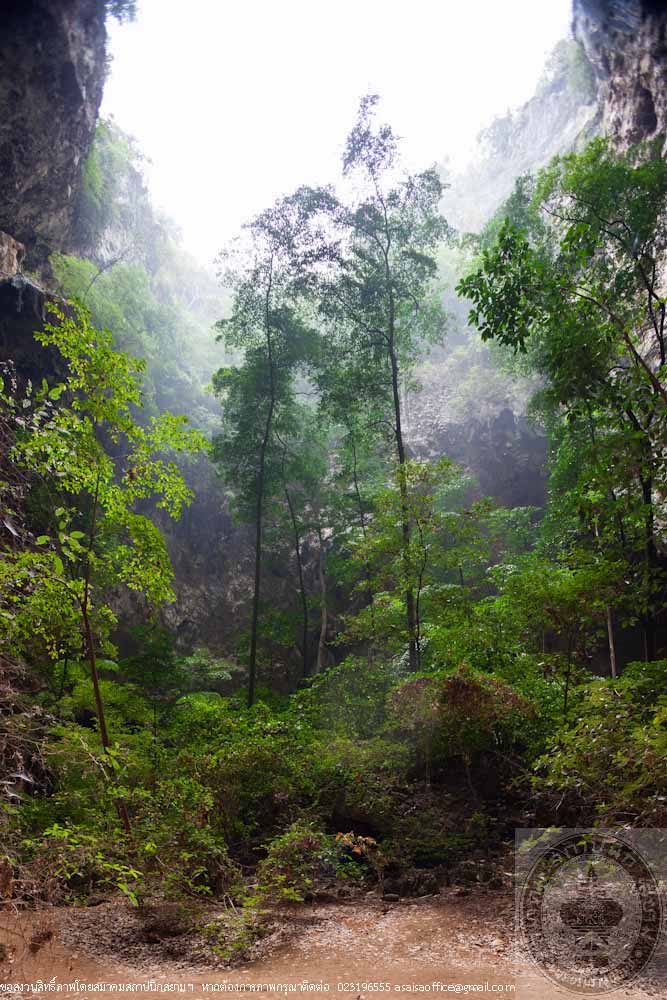
พระที่นั่งคูหาคฤหาสน์ ถ้ำพระยานคร
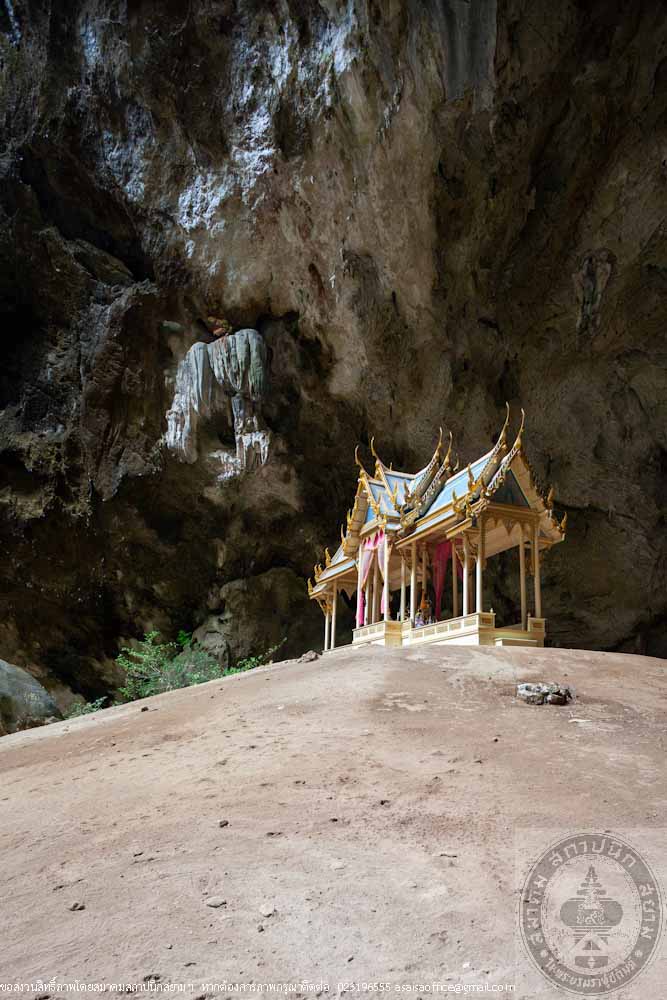
พระที่นั่งคูหาคฤหาสน์ ถ้ำพระยานคร
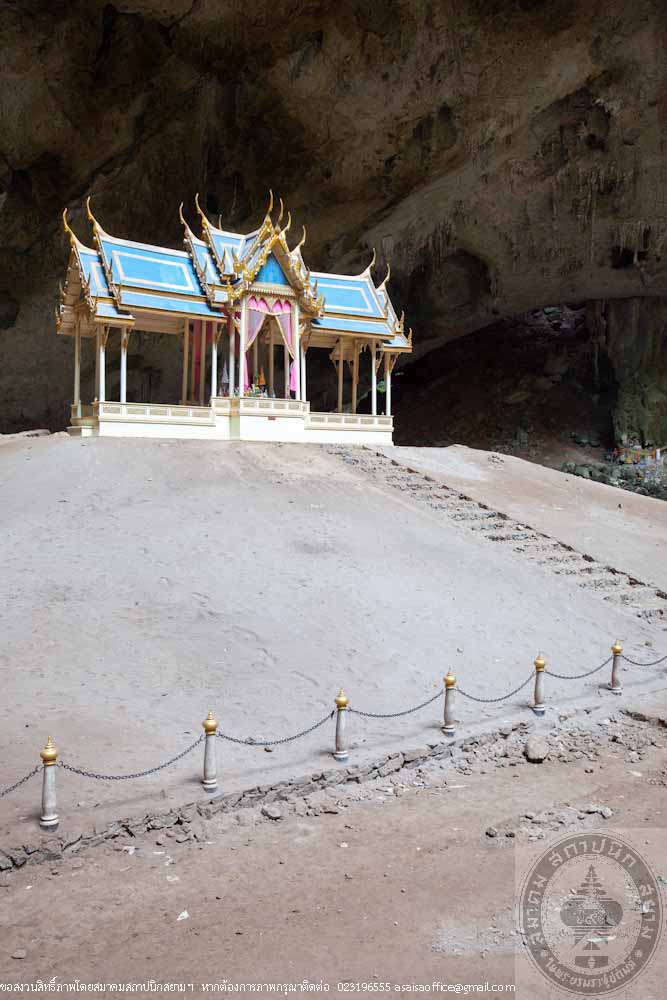
พระที่นั่งคูหาคฤหาสน์ ถ้ำพระยานคร
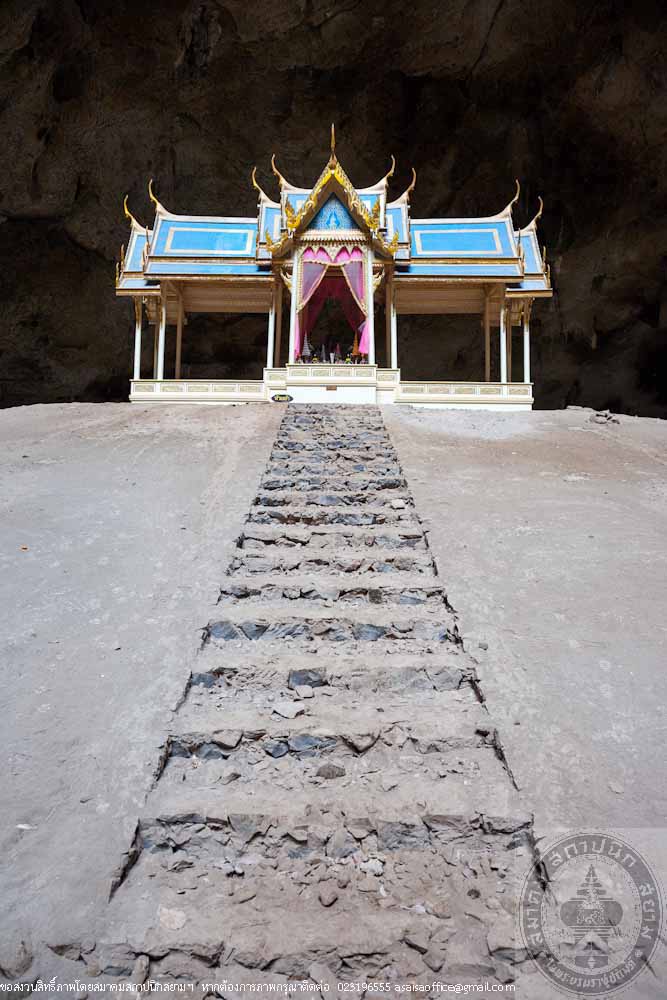
พระที่นั่งคูหาคฤหาสน์ ถ้ำพระยานคร
-

พระที่นั่งคูหาคฤหาสน์ ถ้ำพระยานคร
-

พระที่นั่งคูหาคฤหาสน์ ถ้ำพระยานคร
-

พระที่นั่งคูหาคฤหาสน์ ถ้ำพระยานคร
-

พระที่นั่งคูหาคฤหาสน์ ถ้ำพระยานคร
-

พระที่นั่งคูหาคฤหาสน์ ถ้ำพระยานคร
-

พระที่นั่งคูหาคฤหาสน์ ถ้ำพระยานคร
-

พระที่นั่งคูหาคฤหาสน์ ถ้ำพระยานคร
Kuhakaruhat Mansion, Phraya Nakhon Cave
Location Phraya Nakhon Cave, Kao Samroi Yod, Samroi Yod, Prachuap Khiri Khan >
Designer Vice Admiral Prince Kachoncharaswong (Mom Chao Kachon Malakul)
Year Built 1890
Award Year 2013
Owner Located in Khao Sam Roi Yot National Park
History
Kuhakaruhat Mansion is located inside Phraya Nakhon Cave on one of the hillsides of Khao Samroi Yod range in Khao Samroi Yod National Park, Prachuap Khiri Khan. The history behind the name of the cave was that the cave was discovered by Phraya Nakhon, Governor of Nakhon Sri Thammarat. However, there is no clear evidence as to which Phraya Nakhon between Phraya Nakhon from Ayuthaya period, in the reign of King Narai the Great (1656-1688.) This Phraya Nakhon was the one who had Sri Prach executed when he was in exile in Nakhon Sri Thammarat without the royal consent. On his way to appear before His Royal Highness, he sought shelter during a strong wind and escaped to hide in this cave. He was finally caught and executed. Another Phraya Nakhon lived in the reign of King Rama I of Rattanakosin era. At the time, Thai was at war with Burma (during the Burmese reign of King Padung) Phraya Nakhon received false information from the Burmese that the Burmese had defeated Thai and fled. He was later investigated and when the truth revealed, H.M. the King allowed him to return to dominate Nakhon Sri Thammarat. On his way back, there was a strong wind that he had to find shelter on the mountain and that was how he discovered this cave.
His Majesty King Mongkut (Rama 4) stopped by at Phraya Nakhon Cave in 1859 on his way to visit the southern precinct. At this time, “Sala Bo Nam” was built in the beach bay area. The pavilion was built of wood and terra cotta tiles. The pavilion is 10 cubit wide and consists of three rooms with concrete flooring throughout. The center room has a well. A round man-made well of about 4 cubit wide and 6 cubit deep was a brick structure all around and from the bottom of the well with stone walkway of about 400 meters long going up the mountain. This beachside well was once called “Phraya Nakhon Well”
King Chulalongkorn (Rama V) also visit Phraya Nakhon cave on his way to visit Malayu Peninsula in 1890. H.M. King Chulalongkorn ordered the construction of a pavilion. He had Prince Kachoncharaswong built the pavilion in Bangkok and rebuild it in the cave. On June 20, 1890, H.M. King Chilalongkorn attended the ceremony of mounting the gable end finial and named the pavilion, “Kuhakaruhat Mansion.” He also engraved his monograms on the cave wall to the north of the pavilion. The Fine Arts Department announced the registration of Kuhakaruhat Mansion as nation historical monument in the Government Gazette Vol. 69, Part 60, dated September 30, 1952.
It was told that King Rama VI had also visited Phraya Nakhon Cave once but did not indicate the year. His Majesty King Prajadhipok (Rama VII) stayed at Kuhakaruhat Mansion on November 20, 1926 and inscribed his monograms on the cave wall on the west side of the pavilion. H.M. King Bhumibol Adulyadej made unofficial visit to Kuhakaruhat Mansion on June 22, 1958.
A tetrahedron pavilion, 1.75 meter wide, 7.75 meter long and 2.55 meter tall, the floor used to be elevated about 0.50 meter above ground. Wood structure, double roof and covered with metal sheet. Gable decorated with the roof ornaments including Cho Fah, Bai Raka, Hang Hong made from carved wood embellished with glass according to Traditional Thai architectural style that all pediments on all side of the porch are to be decorated with Thai patterned glass work as well as star painting on interior ceiling.